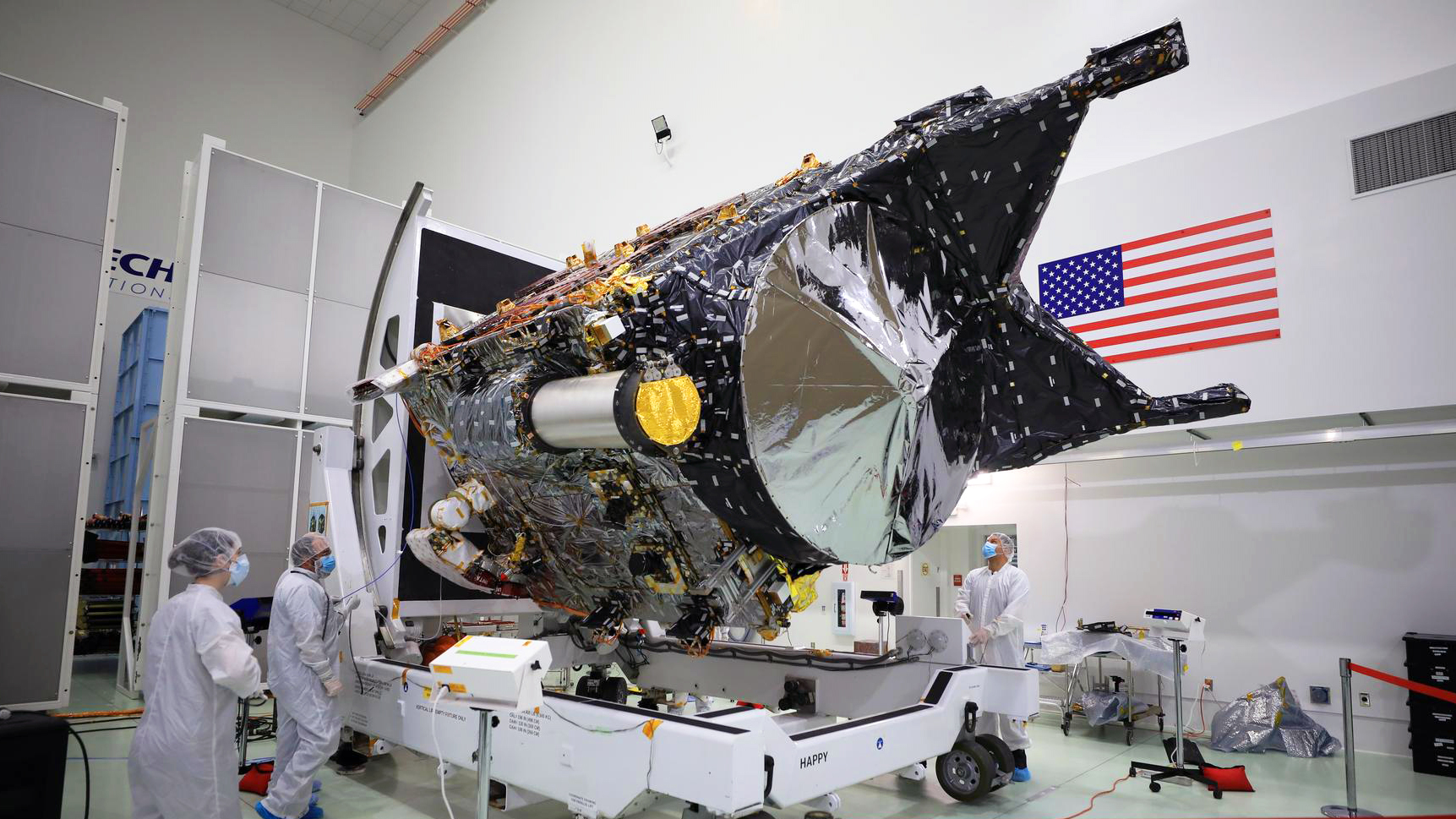NASA, JAXA XRISM Mission Looks Deeply Into ‘Hidden’ Stellar System
The Japan-led XRISM (X-ray Imaging and Spectroscopy Mission) observatory has captured the most detailed portrait yet of gases flowing within Cygnus X-3, one of the most studied sources in the X-ray sky. Cygnus X-3 is a binary that pairs a rare type of high-mass star with a compact companion — likely a black hole. “The […]

4 min read
NASA, JAXA XRISM Mission Looks Deeply Into ‘Hidden’ Stellar System
The Japan-led XRISM (X-ray Imaging and Spectroscopy Mission) observatory has captured the most detailed portrait yet of gases flowing within Cygnus X-3, one of the most studied sources in the X-ray sky.
Cygnus X-3 is a binary that pairs a rare type of high-mass star with a compact companion — likely a black hole.

“The nature of the massive star is one factor that makes Cygnus X-3 so intriguing,” said Ralf Ballhausen, a postdoctoral associate at the University of Maryland, College Park, and NASA’s Goddard Space Flight Center in Greenbelt, Maryland. “It’s a Wolf-Rayet star, a type that has evolved to the point where strong outflows called stellar winds strip gas from the star’s surface and drive it outward. The compact object sweeps up and heats some of this gas, causing it to emit X-rays.”
A paper describing the findings, led by Ballhausen, will appear in a future edition of The Astrophysical Journal.
“For XRISM, Cygnus X-3 is a Goldilocks target — its brightness is ‘just right’ in the energy range where XRISM is especially sensitive,” said co-author Timothy Kallman, an astrophysicist at NASA Goddard. “This unusual source has been studied by every X-ray satellite ever flown, so observing it is a kind of rite of passage for new X-ray missions.”
XRISM (pronounced “crism”) is led by JAXA (Japan Aerospace Exploration Agency) in collaboration with NASA, along with contributions from ESA (European Space Agency). NASA and JAXA developed the mission’s microcalorimeter spectrometer instrument, named Resolve.
Observing Cygnus X-3 for 18 hours in late March, Resolve acquired a high-resolution spectrum that allows astronomers to better understand the complex gas dynamics operating there. These include outflowing gas produced by a hot, massive star, its interaction with the compact companion, and a turbulent region that may represent a wake produced by the companion as it orbits through the outrushing gas.

In Cygnus X-3, the star and compact object are so close they complete an orbit in just 4.8 hours. The binary is thought to lie about 32,000 light-years away in the direction of the northern constellation Cygnus.
While thick dust clouds in our galaxy’s central plane obscure any visible light from Cygnus X-3, the binary has been studied in radio, infrared, and gamma-ray light, as well as in X-rays.
The system is immersed in the star’s streaming gas, which is illuminated and ionized by X-rays from the compact companion. The gas both emits and absorbs X-rays, and many of the spectrum’s prominent peaks and valleys incorporate both aspects. Yet a simple attempt at understanding the spectrum comes up short because some of the features appear to be in the wrong place.
That’s because the rapid motion of the gas displaces these features from their normal laboratory energies due to the Doppler effect. Absorption valleys typically shift up to higher energies, indicating gas moving toward us at speeds of up to 930,000 mph (1.5 million kph). Emission peaks shift down to lower energies, indicating gas moving away from us at slower speeds.
Some spectral features displayed much stronger absorption valleys than emission peaks. The reason for this imbalance, the team concludes, is that the dynamics of the stellar wind allow the moving gas to absorb a broader range of X-ray energies emitted by the companion. The detail of the XRISM spectrum, particularly at higher energies rich in features produced by ionized iron atoms, allowed the scientists to disentangle these effects.
“A key to acquiring this detail was XRISM’s ability to monitor the system over the course of several orbits,” said Brian Williams, NASA’s project scientist for the mission at Goddard. “There’s much more to explore in this spectrum, and ultimately we hope it will help us determine if Cygnus X-3’s compact object is indeed a black hole.”
XRISM is a collaborative mission between JAXA and NASA, with participation by ESA. NASA’s contribution includes science participation from CSA (Canadian Space Agency).
By Francis Reddy
NASA’s Goddard Space Flight Center, Greenbelt, Md.
Media Contact:
Claire Andreoli
301-286-1940
claire.andreoli@nasa.gov
NASA’s Goddard Space Flight Center, Greenbelt, Md.
Share
Details
Related Terms
What's Your Reaction?



















.jpg?#)



































